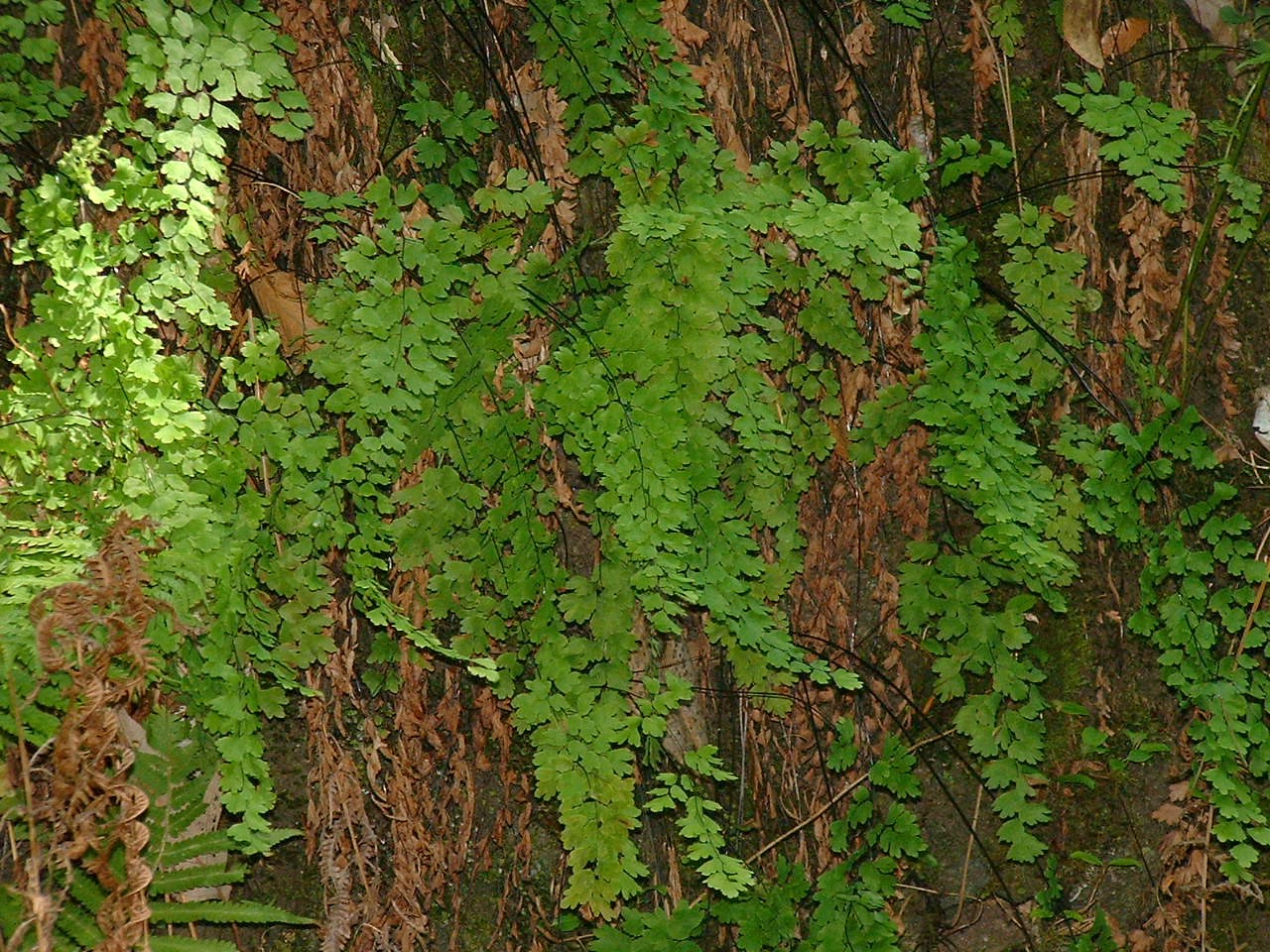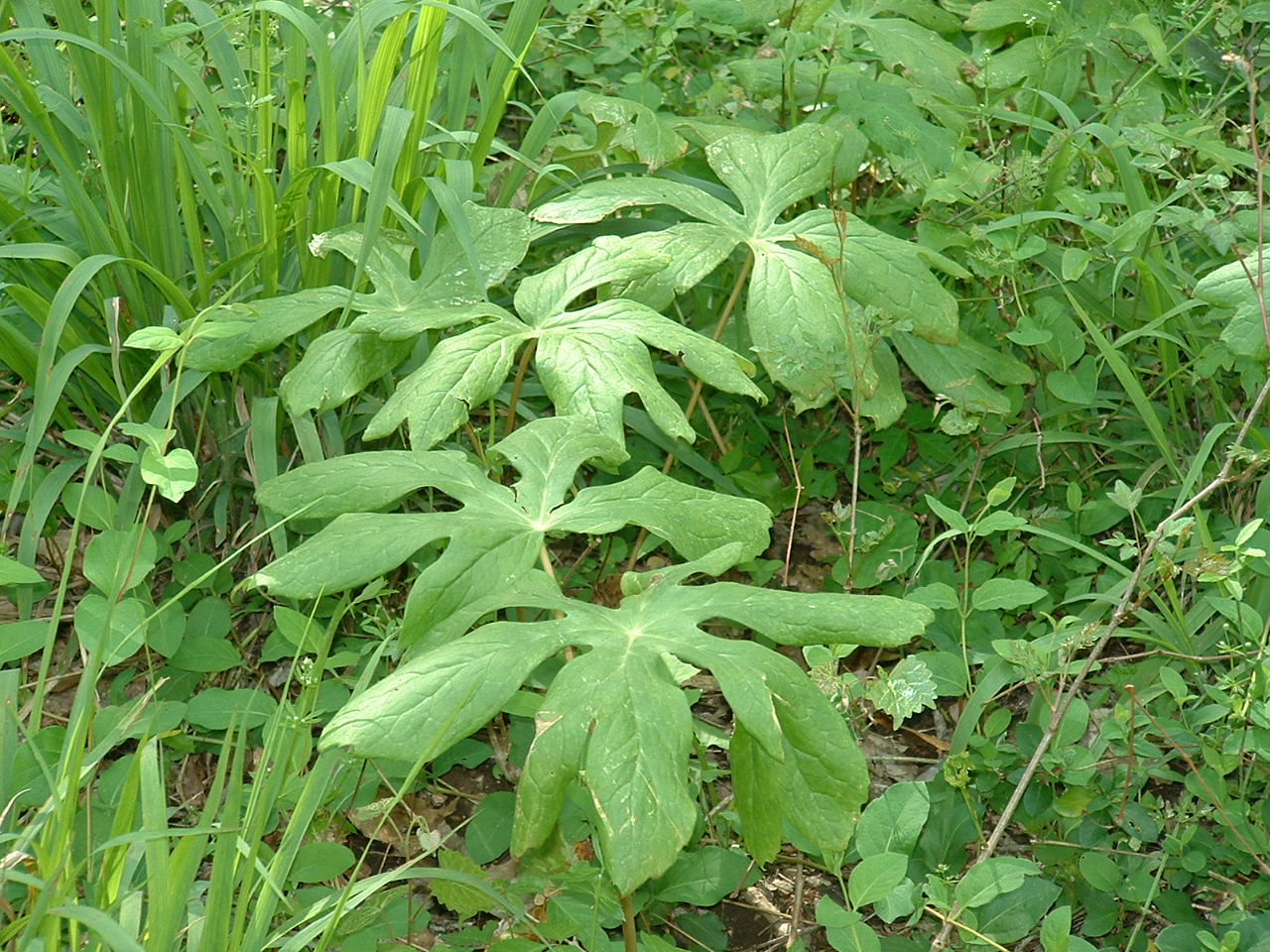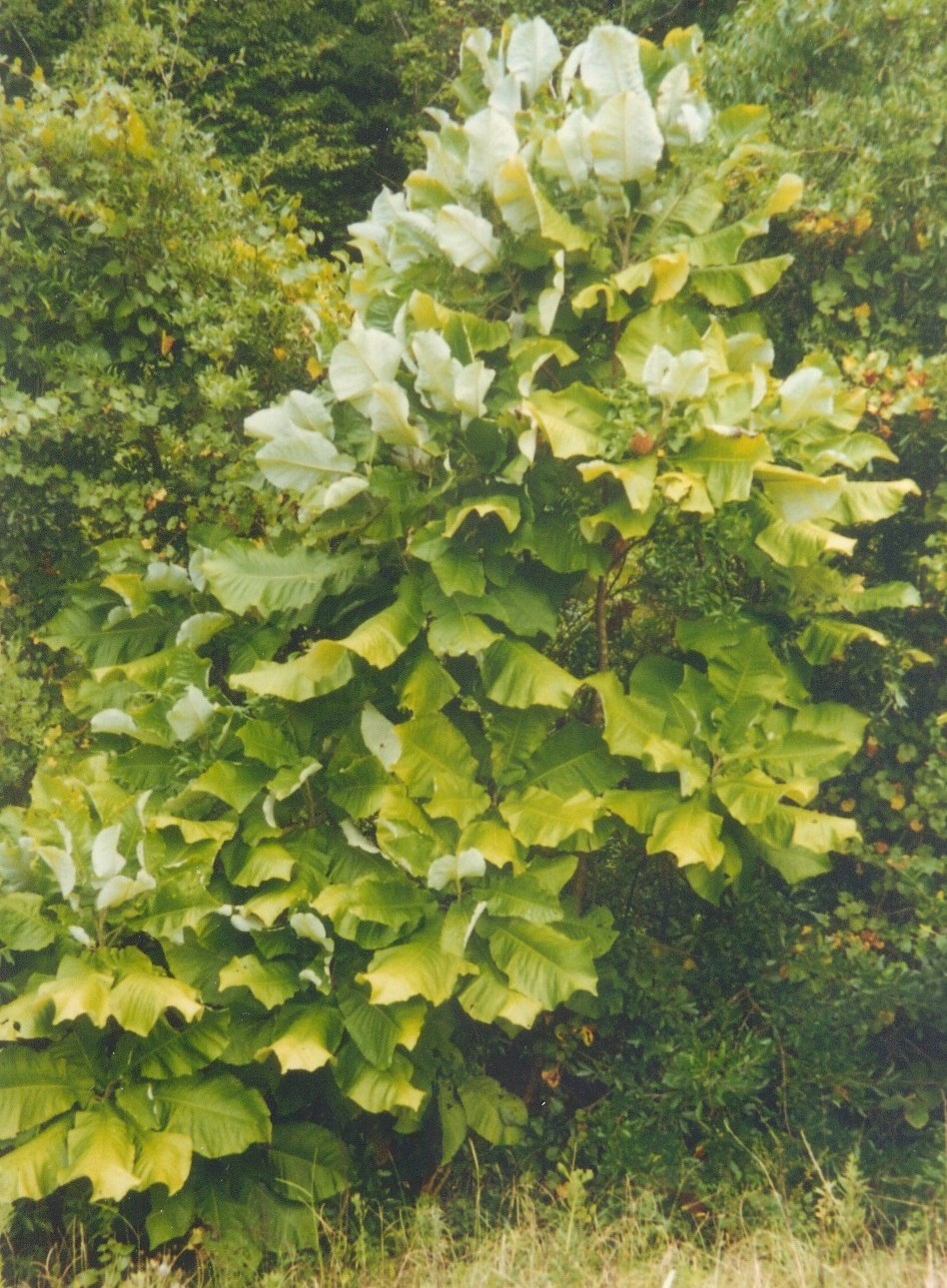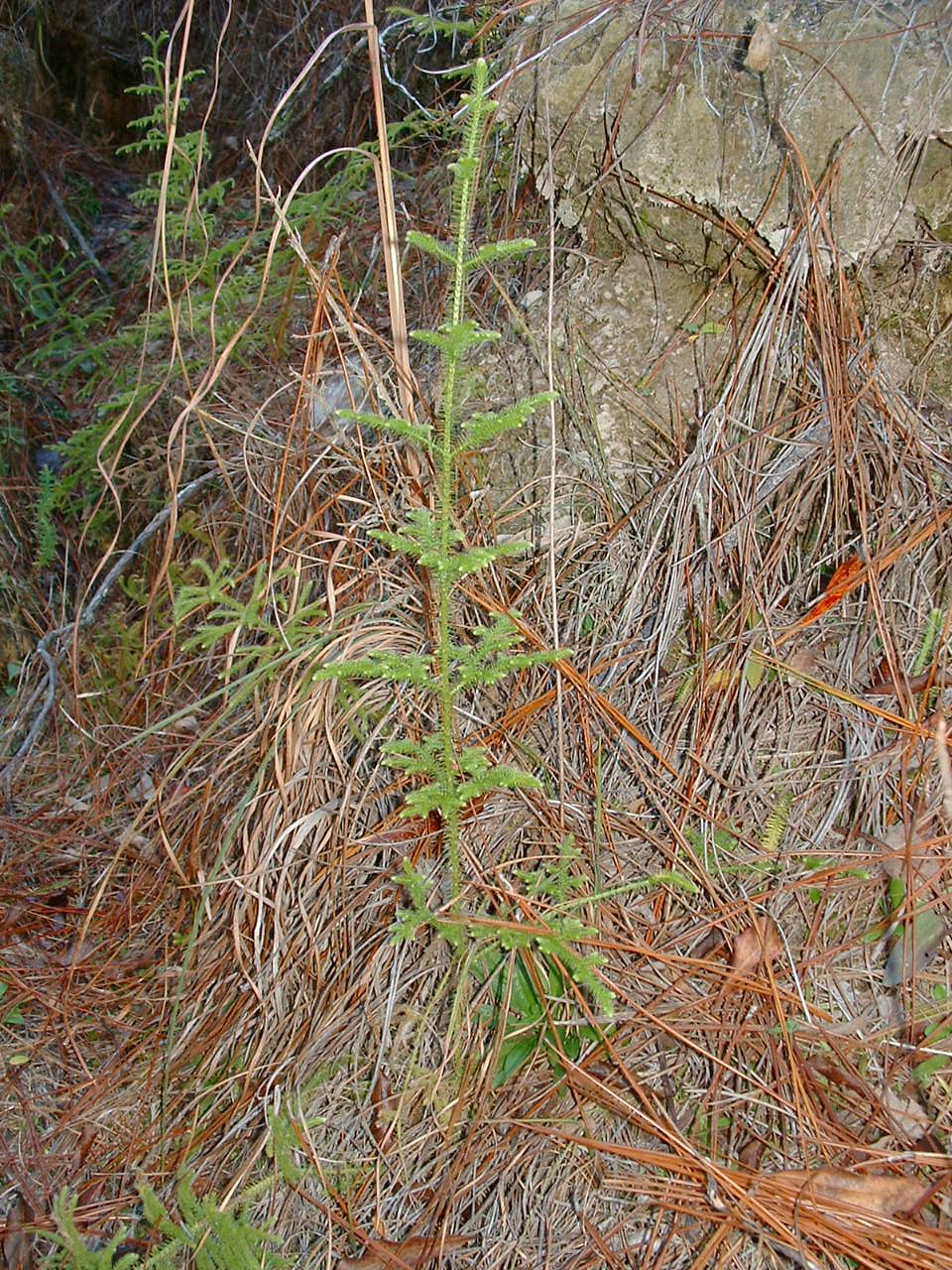|

(Above) Southern Maidenhair Fern (Adiantum
capillus-veneris). Washington Co., FL.
Maidenhair fern grows in karst areas of caves and sinkholes. Within
this limited habitat, it can be found growing along the entrance of caves and along the vertical walls of sinkholes.
(Below) Mayapples (Podophyllum peltatum).
Jackson Co., FL.

Mayapples are a surprise, especially for people who grew up or have lived in the Midwest
or northern Appalachian states. Mayapples are found in very small areas and reach the southern limit of their range
in Jackson Co., FL, primarily in and around Florida Caverns State Park.

(Above) Bigleaf Magnolia (Magnolia macrophylla).
Forest Co., MS.
Bigleaf Magnolias are very distinctive trees with very large leaves up to 2 - 3 feet long!
(Below) Pyramid Magnolia (Magnolia pyramidata).
Liberty Co., FL

Pyramid Magnolias also have large leaves, up to about 1.5 feet long.
They grow as midstory trees in hardwood and mixed pine forests and sheltered ravines.
(Below) Nodding Club Moss (Lycopdodiella
cernua). Jackson Co., FL.

Nodding Club Moss is a small and very primitive and ancient species of moss
which grows in seepage slopes and very acidic habitats.
Pg. 9 Beneficial Critters & Species!
|



